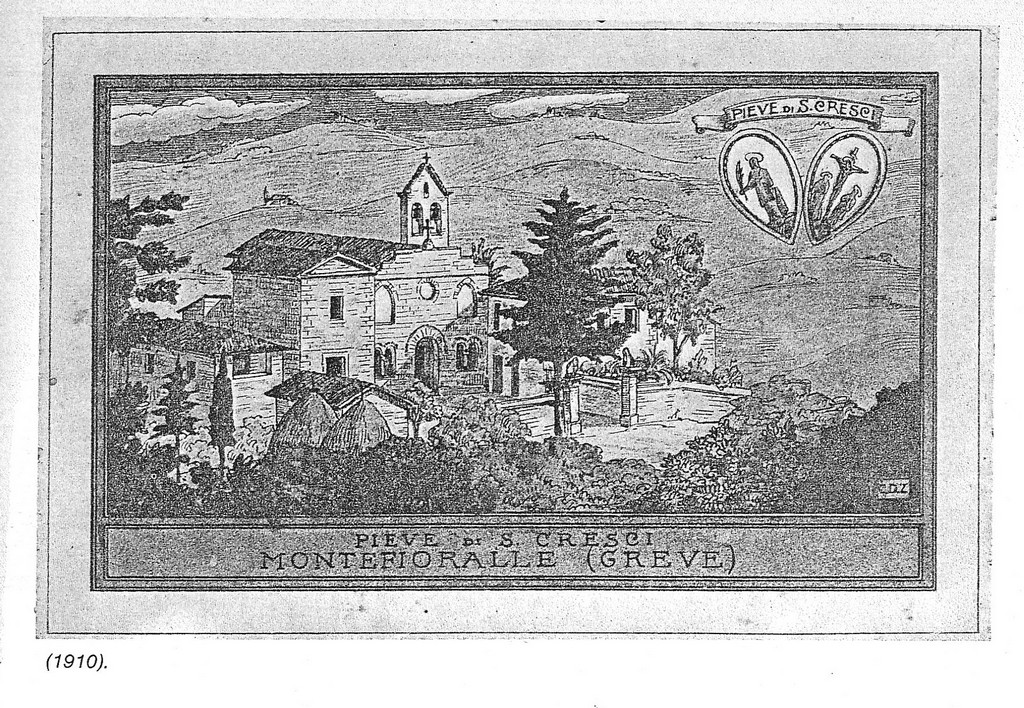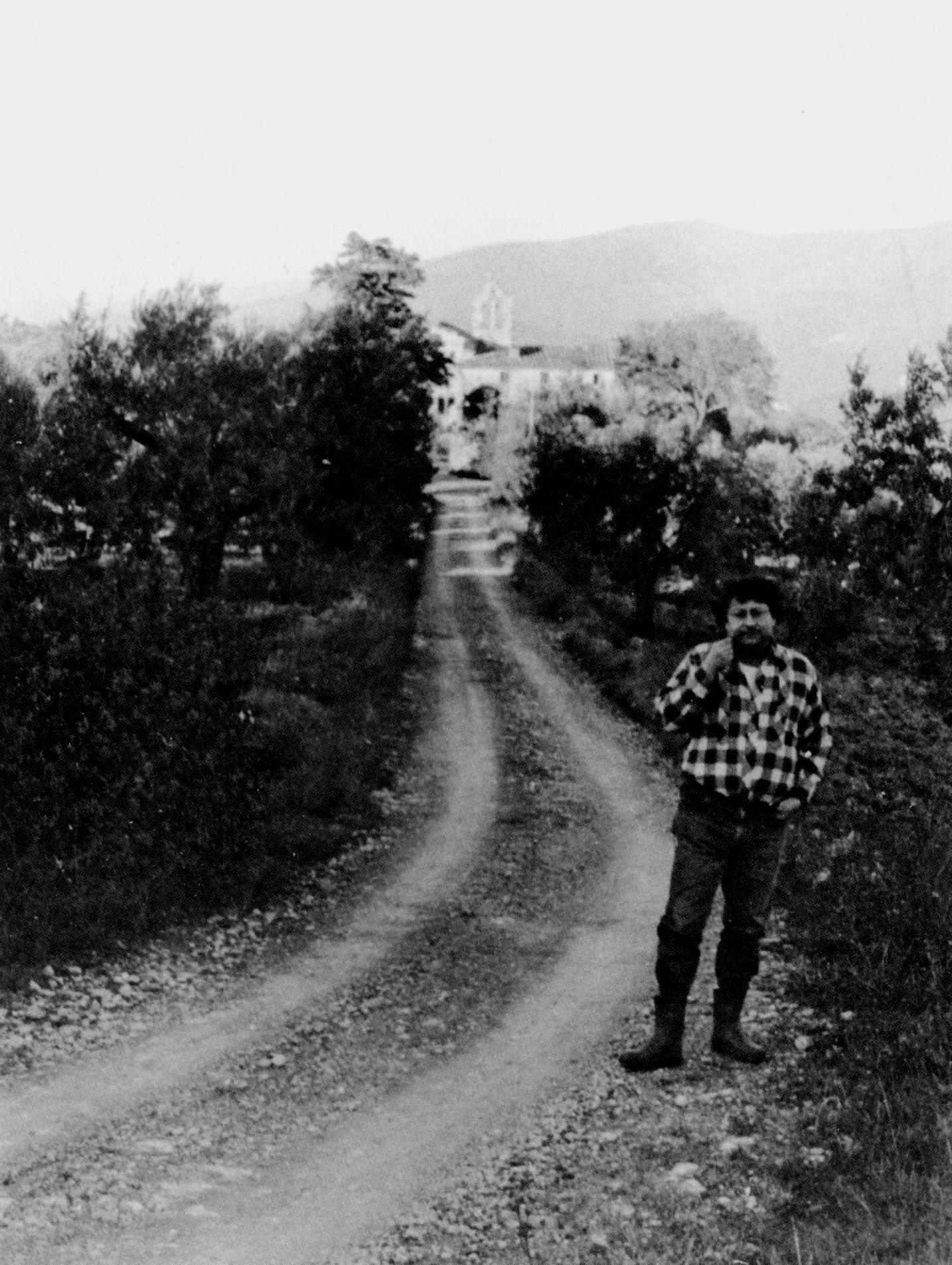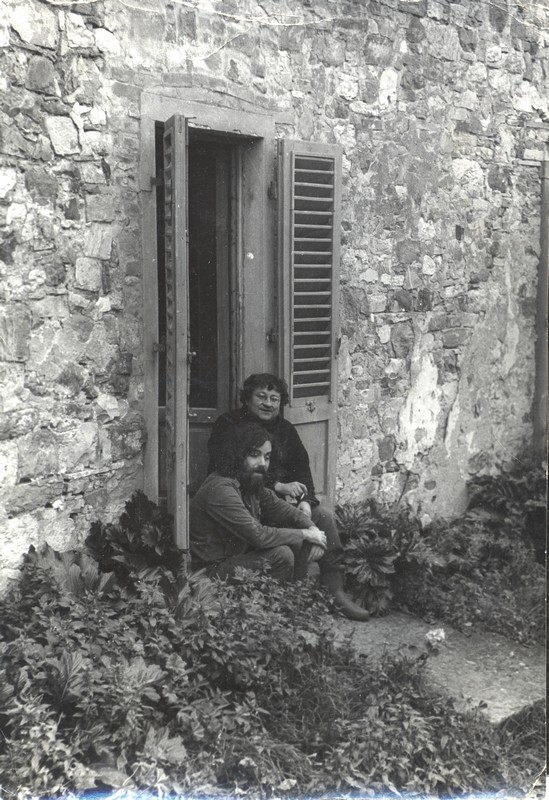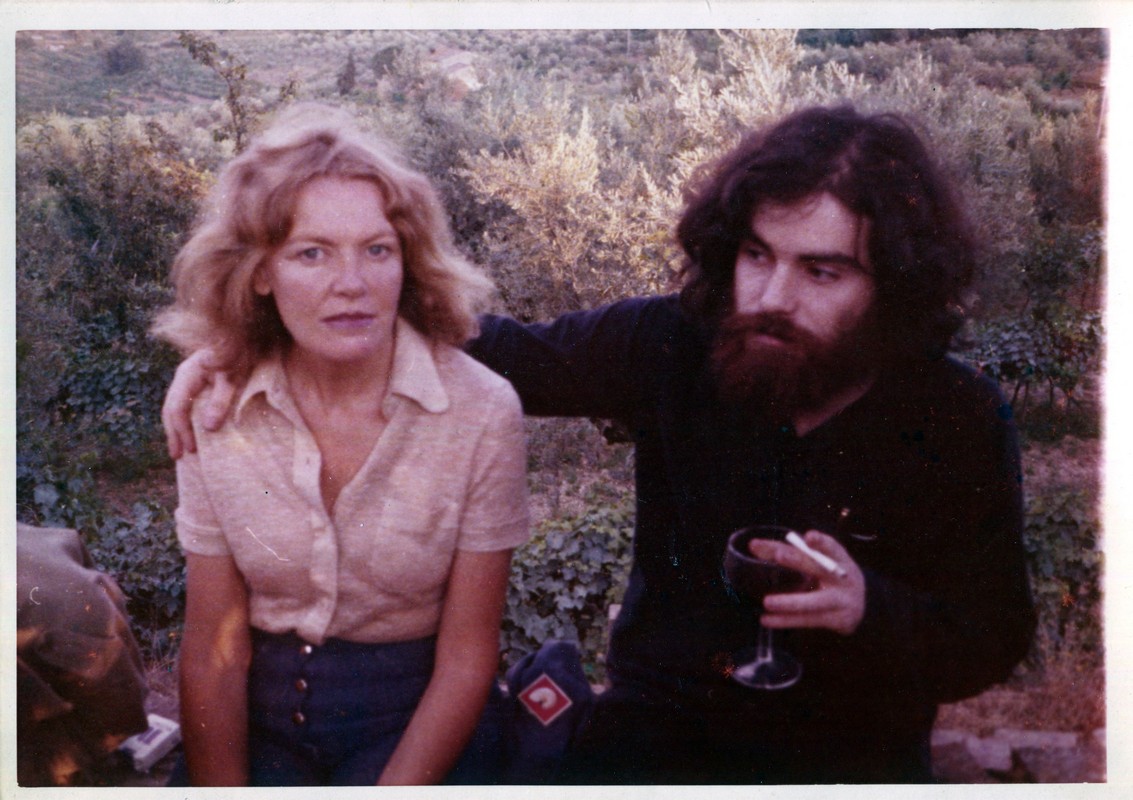La Macina di San Cresci offers artists an opportunity to work for an extended period of time in a social environment that is rich in history and surrounded by nature, the Chianti landscape is possibly the best-known of all of Tuscany. The relaxed atmosphere and the splendid historic building, form an exciting combination.
Participants are provided with a studio, accessible 24 hours a day, 7 days a week , as well as access to our facilities to further develop production techniques. Knowledgeable staff are available to provide technical support and assistance.
Eligibility
Are invited to apply for the residency artists working in the following creative disciplines: drawing, painting, sculpture, photography, film, video, new media, installation, fiction and nonfiction writing, poetry, dance, music ( there is a restored organ available in the church), interdisciplinary, design and architecture.
Emerging as well as established artists are invited to apply.
Application Periods
Open year-round. No deadline.
Notification
Residency applications are reviewed on a rolling basis and can be submitted at any time. Applicants will be notified of admission status approximately 7 – 10 days after the application received.
Application materials
(All of the following materials must be included with the application in order for it to be processed).
• Application form filled
• One-page, Proposed Project.
• Bio/Resume/Professional Summary, this should include educational background, teaching, publications, exhibitions, awards, honors and other pertinent experience.
• Artist Statement (maximum 2000 characters- app. 400 words)
• Work samples (should be recent and representative of the work according to the applicant’s medium and discipline .
If your application form together the requested documents exceed 5MB , you have to send it by www.wetransfer.com
Note about Project Proposal:
Please write a brief description of the work you intend to do at La Macina .
La Macina di San Cresci encourages experimentation in all disciplines and the Committee recognize that your project may evolve or change completely while you are in residence.
Selection procedure
Applicants are invited based upon resume, compatibility and stated artistic intentions.
Decisions are made by a Committee composed of La macina ‘s founders, representatives from the Municipality of Greve in Chianti and a staff of artists and professionals. Panelists are routinely rotated.
Residency Costs
The residency fee is intended to cover the general cost of running the program and the maintenance of historic building that is under the protection of Ministry of Cultural Heritage.
Artists in residence are therefore expected to cover their own living expenses and the costs of their accommodation and studio space.
One week € 550, each next week € 380.
Is requested a deposit of € 200 when the applicant receives acceptation of the candidature.
Balance is due no later one month before the sojourning begins.
Rate includes:
- Accommodation ( private room ) in the historical complex of Pieve di San Cresci for the duration of the program including studio space.
- Support staff for orientation and general assistance.
- Use of the facilities available at La Macina.
- Inclusion in the Yearbook and website ( if during the residency the artist has developed the project proposal; the inclusion is at discretion of our Committee)
- N. 1 copy of yearbook “The Artistic Time” relative to the year of residency of the applying artist
- Electricity, water, Internet access.
- Linen and towels are provided.
- Final housecleaning service.
- Two mountain bikes are available.
Rates NOT includes :
- Heating and gas. The costs are paid cash in according to the use, the day before your departure.
- The residents are expected to pay their own travel arrangements to and from the retreat and Visa ( if necessary) , including a medical assistance. We strongly recommend that you take steps to adequately cover yourself against illness, accident, etc before leaving your home town. La Macina di San Cresci will not responsible, at any time or under any circumstances, for medical fees in case of illness, accident, etc.
- The residents are also responsible for all working materials, personal needs , meals and living costs.
Refund Policy
Deposit is non-refundable. Any cancellation must be made in writing by regular mail or email.
No reimbursement if you cancel your residency 21 days or less before the sojourning beginning.
Allowance granted to artists
La Macina di San Cresci is not able to provide direct financial support to artists. Artists in residence are therefore expected to cover their own living expenses and the costs of their accommodation and studio space.
We are happy to assist artists seeking grants or other forms of funding in their home country/institution, by providing letters of recommendation when the candidature is accepted.
Another possibility of financial aid is fundraising through a crowdfunding site (gofundme, kickstarter, indiegogo, etc.). In this way some of our artists have successfully supported their residence.
We hope you will benefit from the opportunity to work in a professional supportive environment, and we make every effort to provide the necessary support to ensure that your time with us is fruitful and enjoyable.
Reapplication
Artists who have had previous residencies at La Macina, do not have to submit a complete application, but only a new proposed project.
Un progetto artistico culturale in collaborazione con la Scuola di Architettura
testo esempio
We have restored this architectural complex for long fifteen years and for us it was like a dream to revive such an extraordinary building. As we are in the field of art, we have invested in La Macina to make it a place to accommodate and imagine new forms of dialogue within the context of art and culture.The Pieve di San Cresci is the oldest in the Chianti area; it began to be mentioned in 948. Named for the saint and martyr Acrisius , popularly called Cresci, the parish church is part of a complex consisting of the priest's house, the chapel of the Blessed Sacrament, the sacristy, and a farm house. The simple structure of the church consists of a central room ending with a presbytery consisting of four columns and six semi-columns that support a cupola formed of a vaulting cell.
The restorations made in 1994 , which were carried out by the Diocesi di Fiesole with the advisory service of the Ministry of the Architectural Heritage and the general coordination of Professor Duccio Trassinelli, lasted until 1997. Restoration of the inside of the parish church enabled the discovery, underneath the 1854 plastering that had concealed them, twelve figures of saints arranged along the side walls and those of the presbytery. In 2003 the cellars pertinent to the priest's house were restored, and these produced several of the characteristic elements of the thousand-year-old rural tradition.

In the 70's, Guy Debord, Gianfranco Sanguinetti and Francoise Sullivan have lived at San Cresci.
Guy Debord was a French theorist, philosopher, filmaker, member of the Letterist International, founder of a Letterist faction, and founding member of the Situationist International (SI)
Guy Debord's best known works are his theoretical books, Society of the Spectacle and Comments on the Society of the Spectacle .
On January 29, 2009, 15 years after his death, Christine Albanel, Minister of Culture, classified the archive of his works as a "national treasure" .
The Ministry declared that "he has been one of the most important contemporary thinkers, with a capital place in history of ideas from the second half of the 20th century.”


Photo courtesy: Gianfranco Sanguinetti
You can see San Cresci in Debord's film “In girum imus nocte et consumimur igni”
Gianfranco Sanguinetti. An Italian, born in 1948 in Lausanne (Switzerland). A member of the Situationist International, the last and most radical avant-garde movement of the 20th century (1957 – 1972), an international artistic-political group founded by the revolutionary, theoretician, writer and film-maker Guy Debord. In 1972 he and Guy Debord signed La Véritable Scission dans l’Internationale (The Real Split in the International), a declaration dissolving the Situationist International. Sanguinetti continued to live in Florence and Milan, where in 1975 he published, under the pseudonym Censor, the scandalous and subsequently celebrated pamphlet Rapporto Veridico (The Real Report) that was translated into many languages. In the 1990s he returned once more to Paris, where he published, for example, the first French edition of the complete philosophical work of Giacomo Leopardi (Éditions Allia). Since 1989 he has been living between Prague and Tuscany.
The Beinecke Rare Book & Manuscript Library at Yale University has recently acquired the papers of Italian writer and activist Gianfranco Sanguinetti, a key figure in the Situationist International avant-garde protest movement in the 1960s and 1970s.
The archive features more than 650 letters between Sanguinetti and Guy Debord, the French theorist, writer, and filmmaker who founded the Situationist International [SI], a group of intellectuals and artists that blended Marxist theory and 20th century avant-garde art into a comprehensive critique of capitalist society. The majority of these letters have never been published.
Copyright, Beinecke Rare Book and Manuscript Library, Yale University

Françoise Sullivan, dancer, choreographer and visual artist, was one of the founding members of the Automatiste group and a signatory of the manifesto Refus global [Total Refusal] in 1948. From the 1960s on, her work grew more diversified as she turned to photography, sculpture, installation and performance art. However, it is painting that has occupied her interest most intensely over the years, and she continues to devote impressive energy to it today. There are many reasons why Françoise Sullivan is a significant figure in the history of art in Québec and Canada, as is apparent from the range of distinctions she has received, which include the Prix Paul-Émile Borduas, the Ordre de Montréal, the Ordre national du Québec, the Order of Canada, a Governor General’s Award, etc. This recognition underscores the creative diversity of her œuvre and her exceptional career, as well as her influence on many generations of artists. Retrospectives have been held at the Musée d’art contemporain de Montréal (2018, curator Marc Lanctôt; 1981-82, curator Claude Gosselin), the Musée national des beaux-arts du Québec (1993, curator Louise Déry), the Montreal Museum of Fine Arts (2003, curator Stéphane Aquin) and Galerie de l’UQAM (2018, curator Louise Déry; 1998), as well as a great number of group exhibitions in Canada, Europe and the United States, among them On Line: Drawing Through the Twentieth Century at the Museum of Modern Art de New York (2010-11) and The Automatiste Revolution: Montreal 19411960 at the Varley Art Gallery, Unionville, Ontario (2009-10), and the Albright-Knox Art Gallery in Buffalo (2010). For thirty years, beginning in 1977, Sullivan taught visual arts at Concordia University in Montréal. She was born and still lives in Montréal where she is represented by the Galerie Simon Blais.
The arts need help!
A dream began 20 years ago.
When we came to live at San Cresci, the architectural complex was in ruins, the church was falling apart and everything was desolate. We loved this extraordinary place, and in fifteen years of restoration, following the rigid requirements of the Ministry of Cultural Heritage, we restored it to its former glory, thus exhausting all of our personal funds. Into the restored spaces we made the residence for artists, a place for contemporary art with a strong interest in the environment and heritage.
The arts needs help! A dream began in the 1991. When we came to live at San Cresci, the architectural complex was ruining, the church was falling apart and everything was only desolation. We loved this extraordinary place, and in fifteen years of restoration, following the rigid requirements of the Ministry of Cultural Heritage, we reported it to its former glory, thus exhausting all of our personal funds. Into the restored spaces we made the residence for artists, a place for contemporary art and with a strong interest in the environment and heritage. We organize exhibitions of local and international artists, theatrical and musical performances and conferences. Our goal now is to accommodate each artist for free here. Unfortunately now we cannot do this for cost management, we currently have no support from either public or private institutions, but with your help this could happen soon.
Your donation of any amount will help to promote and support La Macina’s programming, to grow the organization and build La Macina’s reputation as a center for contemporary art.
Your contribution will directly support residencies for artists. Gifts of all sizes are welcome, necessary and truly appreciated.
A Fellowship covers the costs of a single residency for a period of up to one month, including the use of a studio, accommodation, and stipend to cover the meals and living costs, and the benefits of a dynamic community of artists working in many disciplines.
The mission of the La Macina di San Cresci is to support the creativity, to be a refuge for the artists to spend quality time on their work in a setting of great natural beauty.
Donors will be acknowledged on our website and in written materials.
We are a cultural organization non-profit. That means we will send you a nice thank-you note for your contribution and you may deduct the amount from your taxes.
Every gift makes a difference in the lives of emerging artist!
Please consider a contribution to La Macina di San Cresci today.
Donate now!
In addition La Macina is grateful for contributions of books, recordings, films, slides, and works of art to add to our permanent collection and made available to artists-in-residence. If you would like to donate a gift in kind, please contact us by email at info@chianticom.com
Page 2 of 3